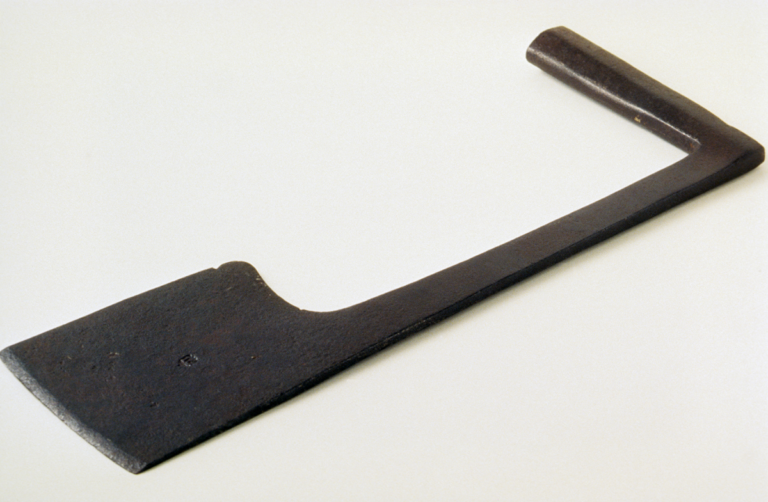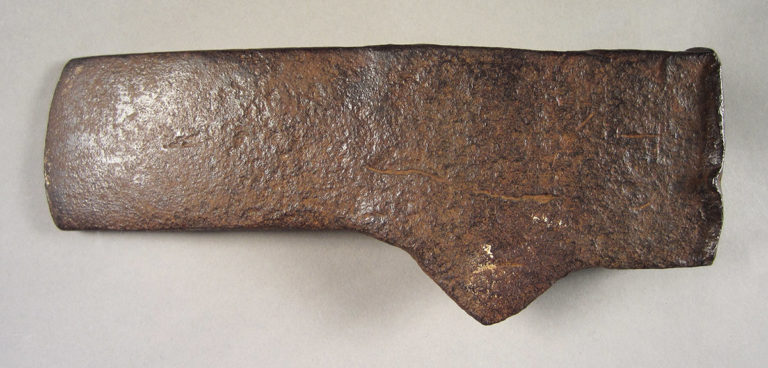Adz & Ax
The adz left a smooth surface on the face of a wood joist, sleeper, or beam. The Dominys used it to take the thin chips off timber or boards and it worked better than an ax or a plane.
Adz, 1800-1850. Wood, iron, and steel. Museum purchase with funds provided by Henry Belin du Pont 1957.0026.230


Axes were indispensable tools for the Dominy craftsmen. They used broadaxes to fell trees and the poles doubled as a pounding surface for such tasks as driving wedges. Variations of broadaxes were "knife-edged," useful for a house carpenter and millwright for hewing beams and rafters and to the wheelwright for rough-shaping stock.
Knife-edged ax, Collins and Co. (Manufacturer), Hartford, Connecticut, 1826-1850. Iron; Wood. 32.5" (L) , 11" (W). Mark: "COLLINS" "HARTFORD" "CAST-STEEL" "WARRANTED." Museum purchase with funds provided by Henry Belin du Pont 1957.0026.231
The Dominy family also owned what was called a carpenter's pairing or socket ax. This ax would have been useful to carpenters, shipwrights, and wheelwrights. The Dominys did very little ship making or repairing, however, and it was probably used by them for carpentry or wheelwright work.
Carpenter’s Paring or Socket Ax, I. C. (Maker), Probably Holland, 1725-1750. Iron. 23.25" (L) , 9.06" (W). Mark; Blade, proper right side; "I C" stamped inside a shield. Museum purchase with funds provided by Henry Belin du Pont 1957.0026.280


Carpenters used mortising axes, sometimes called a "post axe," to cut large, rough mortises. Known to have been used in New England during the seventeenth century, mortising axes began to be used more for making rail holes in the posts of fences after the invention of the spiral auger in 1805.
Mortising ax head, 1750-1800. Iron; Steel. 1.6" (H) , 7.7' (L) , 3.1" (W). Museum purchase with funds provided by Henry Belin du Pont 1957.0026.687
